Ozone Effect on Pathogens
Ozone for Disinfection and Inactivation of Pathogens:
As a biocide, ozone works similarly to chlorine (another oxidant) and is used in a similar manner. Ozone disinfects by directly oxidizing and destroying the microorganism’s cell wall, causing cellular components to leak outside the cell. This causes protoplasmic destruction of the cell, damaging constituents of the nucleic acids, and breaks the carbon–nitrogen bonds, which leads to depolymerization. During the process, ozone splits into oxygen and an ozone atom, which is lost during the reaction with the microorganism’s cell fluids, O3 -> O2 + (O).
This list is not meant to be a comprehensive list of every pathogen ozone can destroy, but a helpful guide to understand the power of ozone. Due to the nature of the direct oxidation power of ozone there is no mechanism for pathogens to create an immunity to ozone as with other chemical disinfectants and biocides.
See how ozone kills bacteria through the process of Lysis here.
Find info on ozone reaction with chemical compounds here.
Viruses:
Ozone destroys viruses by diffusing through the protein coat into the nucleic acid core, where it damages viral RNA. At higher concentrations, ozone destroys the virus’ exterior protein shell so that DNA or RNA structures are affected.
VIRUSES SUSCEPTIBLE TO OZONE: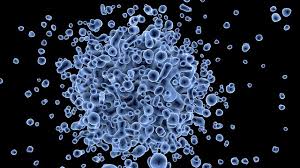
-
Adenovirus (type 7a)
-
Coxsackie’s viruses A9, B3 & B5
-
Cryptosporidium
-
Echovirus 1, 5, 12 & 29
-
Encephalomyocarditis
-
Hepatitis A
-
GD V11 Virus
-
Infectious hepatitis
-
Influenza
-
Norovirus
-
Rotavirus
-
Tobacco mosaic
-
Vesicular Stomatitis
-
Legionella pneumophila
-
Poliomyelitis virus 1, 2 & 3
Bacteria:
Ozone interferes with bacterial cell metabolism, probably by inhibiting the enzymatic control system. A sufficient amount of ozone breaks through the cell membrane, destroying the bacteria.
BACTERIA SUSCEPTIBLE TO OZONE: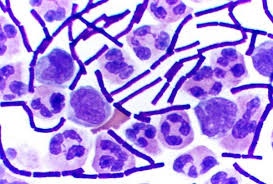
|
|
Fungus and Mold:
It is believed that ozone destroys fungi and mold by diffusing through the fungalwall and into the cytoplasm, disrupting the organelles that direct cell function.
FUNGUS AND MOLD SPORES SUSCEPTIBLE TO OZONE: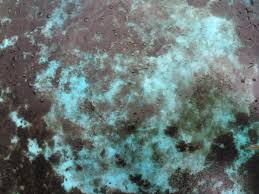
-
Aspergillus candidus,
-
Aspergillus flavus,
-
Aspergillus glaucus,
-
Aspergillus niger,
-
Aspergillusterreus,
-
Saitoi and oryzac
-
Botrytis allii
-
Colletotrichum lagenariu
-
Fusarium oxysporum
-
Grotrichum
-
Mucor recomosus A & B, Mucor piriformis
-
Oospora lactis
-
Penicillium cyclopium, P. chrysogenum and citrinum,
-
Penicillium digitatum,
-
Penicilliumglaucum,
-
Penicillium expansum,
-
Penicillium egyptiacum,
-
Penicillium roqueforti
-
Rhizopus nigricans,
-
Rhizopus stolonifer
Fungal Pathogens:
As described above, the mechanism by which ozone kills various fungi is through the destruction of organelles in the cell’s cytoplasm.
FUNGAL PATHOGENS SUSCEPTIBLE TO OZONE:
-
Alternaria solani
-
Botrytis cinerea
-
Fusarium oxysporum
-
Monilinia fruiticola,
-
Monilinia laxa
-
Pythium ultimum
-
Phytophthora erythroseptica,
-
Phytophthora
-
parasitica
-
Rhizoctonia
-
Solani
-
Rhizopus
-
stolonifera
-
Sclerotium rolfsii
-
Sclerotinia
-
sclerotiorum
Protozoa:
The exact mechanism by which ozone kills protozoa has yet to be determined. The following table lists protozoan species susceptible to ozone.
PROTOZOA SUSCEPTIBLE TO OZONE: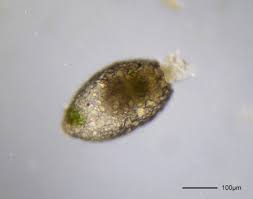
-
Paramecium
-
Nematode eggs
-
All pathogenic and nonpathogenic forms of Protozoa
-
Chlorella vulgaris (algae)
Cysts:
Parasitic cysts are of special concern in drinking water derived from surface water sources because they are unaffected by chlorine. Ozone at proper doses will destroy
cysts listed in the table below.
CYSTS SUSCEPTIBLE TO OZONE: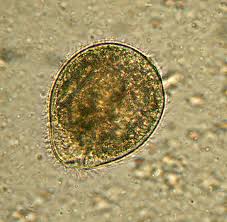
-
Cryptosporidium parvum
-
Giardia lamblia, Giardia muris
Algae:
Algae in drinking water supplies release organic chemicals during normal metabolic processes and after they die. These chemicals typically do not cause human illness, but do create problems of taste and odor and the potential for increased formation of trihalomethanes
ALGAE SUSCEPTIBLE TO OZONE:
-
Chlorella vulgaris
-
Thamnidium
-
Trichoderma viride
-
Verticillium albo-atrum,
-
Verticillium dahlia
Yeasts:
Similarly to related molds and fungi, various types of yeasts may be destroyed with ozone through the same mechanism.
YEASTS SUSCEPTIBLE TO OZONE:
-
Baker’s yeast
-
Candida albicans
-
Common yeast cake
-
Saccharomyces cerevisiae,
-
Saccharomyces ellipsoideus,
-
Saccharomyces sp.










